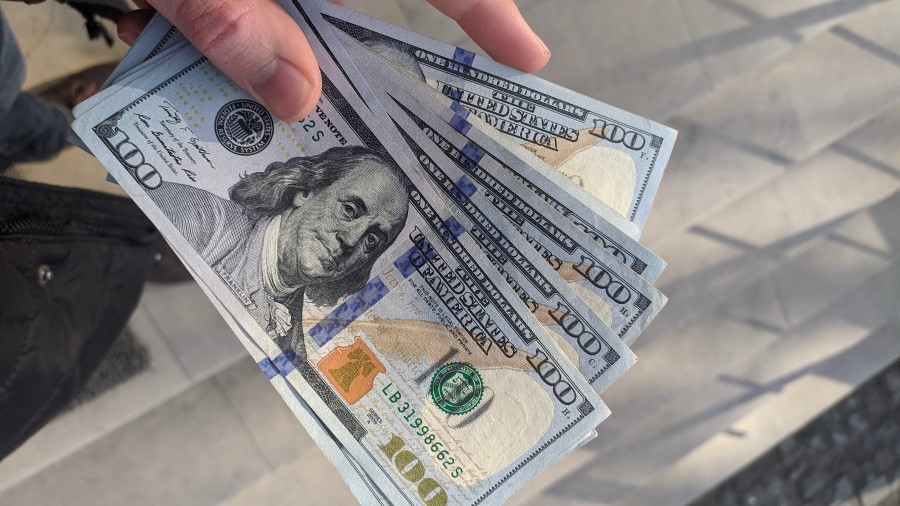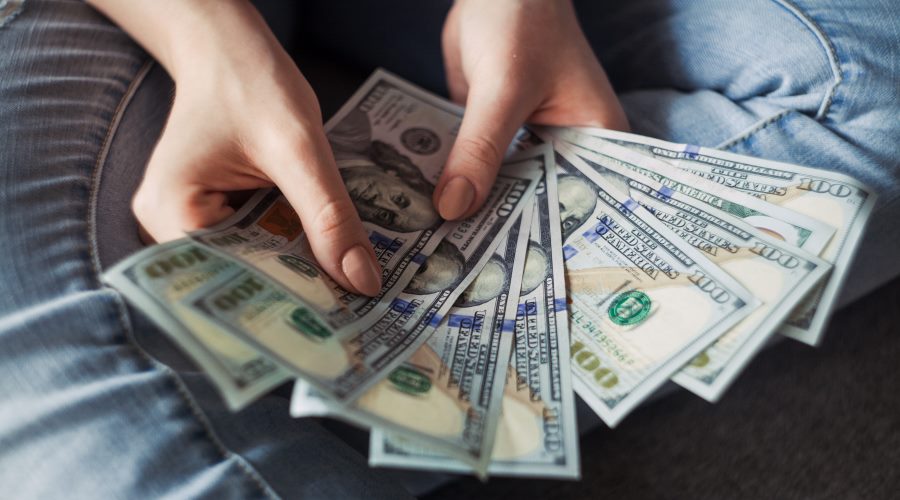
It is not a new thing around the corner. Whenever you or any other person wishes to borrow some money or buy something at a high price, this term comes up in the discussion.
Be it a new car, your dream house, or any other expensive commodity, there is an amount to be put which is referred to as a down payment. It is necessary for approval and might jeopardize your borrowing rates in the long run. Knowing the basics of down payments will certainly aid you in your venture to make the right decision.
Folks who are making the purchase strive for loans to assist them in covering the residual balance of the buying cost. In simple terms, the larger the amount is when you make the transaction, the less you will necessitate completing the transaction. Lower monthly bills and less interest overall go hand-in-hand.
Down Payments Considered
The very first amount that you are asked or required to set aside for paying is acknowledged as a down payment. Nearly all mortgages demand a specific amount. While industry best practices generally call for placing 20% of the purchase price down, specific mortgage lenders permit far lesser deposits.
Your loan-to-value ratio will determine your interest rate. The same ratio indicates whether PMI or loan is ideal for you. It also depends on the amount of your down payment. It gets stated as a portion of the total price.
For instance, 15% of the cost of a new Volkswagen can be your responsibility, with the other amount being covered by a bank-approved auto loan.

What is a Down Payment?
Let’s approach it in a simple way: basically, a down payment is required when you make a purchase of a high-priced commodity. It is the very first deposit that you make.
You need to understand that it is non-refundable. Subtract the amount of that from the rest of the cost. What you will get is the amount that is supposed to be paid by financial institutions. The lending institution feels secure since the consumer is paying a chunk of the purchase price beforehand.
When we are talking about real estate, a down payment often comes up in that discussion. It varies from 5% to 20% of the whole pricing of the transaction.
The bank, or any other financial institution, provides a mortgage to pay the remaining sum. Additionally, typical automobile purchases are a down payment. A large amount reduces the portion of the mortgage or loan that must get repaid to the bank.
How Do Down Payments Work?
The degree of risk involved in lending to a particular borrower often drives a lender’s decision on the applicable interest rate for that borrower. LTV is one of the variables that each lender uses to determine this evaluation. Loan Worth Ratio, or LTV for short, is measured by dividing the loan balance by the car’s value.
It may seem preferable to put little or nothing down. A low down payment seems all good in general conversation, but in pen and paper, it is proven that it is the other way around.
Making a modest down payment has perks, but when you consider the overall picture, the perks of making a higher downpayment much outweigh the benefits of putting in a smaller portion.
Examples of Down Payments
The buyer won’t have to pay PMI charges if they make the recommended first deposit of 20%. Here are a few examples of down payments with that in mind.
For Home Purchases
20% has always been the standardized percentage when we are talking about a down payment for a house. Anyway, it is also possible to obtain a house with merely 3.5% down, and there are even some mortgages that need 10% or 15% down.
Cooperative flats, which are also referred to as co-ops, are a situation where a hefty down deposit is often needed and are pretty well-known in several areas.
For Auto Purchases
A 20% or higher down payment might make it easier for a customer to get approved for a loan, acquire a higher interest rate, and have better terms when buying a car.
Automobile shops may provide special programs with 0% down to qualifying customers. The lender may impose a higher interest rate for the loan despite the lack of requirement for a down payment.
Read Also: Auto Repair Loans
Why is Down Payment Important?
A down payment gives you the power of ownership of your newly bought vehicle or property. It also lowers their monthly cost for the principal and interest on their mortgage.
The buyer may suffer a loss while the property is sold if down paying is required and the property’s price decreases in the future.
Setting up a certain sum of money every month will enable you to build up a sizable sum for a down payment.

Down Payment Loans Considered
There are measures and services that aid you with that massive amount of down payment. Yes, you heard it right! There are many ways in which you can get assistance for your hefty down payment.
You often have to pay down a certain amount of the total cost of your property when you purchase it. You refer to this as your down payment.
Your required down payment will vary, and some lending programs might not even ask for one. It is understandable, as your first time ever making significant purchases, it can be pretty challenging to come up with such an amount. And that is why there are ways in which you can get help with it.
What is a Down Payment Loan?
If you’re shopping for a house, you’ve probably already determined your monthly budget. You may even be familiar with all the stages of purchasing a property. However, for the majority of individuals, the most daunting challenge is coming up with the funds for a down payment.
A down payment loan is an amount that is provided by a separate party. Also, you should know that it isn’t involved in the transaction to assist with the down payment and primary fees for an estate purchase.
Many institutions have their eligibility criteria. Thus, a broad range of individuals may be eligible for down payment help.
How Down Payment Loans Work?
The procedure for applying for a down payment loan is as follows:
- Apply the required loan amount.
- Send in the necessary paperwork and the best submission you can.
- Better loan offers are made for more robust loan applications. About your application, the lender will contact you if it fits the requirements for eligibility.
- If necessary, give any more details. Your loan offer should arrive shortly. A promissory note may be included with your loan proposal by some lenders.
- If you agree to the loan offer, sign and deliver the letter. The loan is subsequently dispersed in a fair amount of time into your bank account.
- You must now configure your method of repayment. To make sure you’re paying on time each month, you can select an auto-pay option online.
Read Also: How to Make Money Online: Best Ways
Types of Down Payment Loans
You’re planning to take out a mortgage but realize that you don’t have enough cash saved aside for a down payment. A down payment loan might be helpful in this situation.
The quantity of money you require fluctuates frequently. A typical down payment is required, i.e., 20% of the entire cost. When buying a home, this kind of down payment is ideal.
As an individual, you should be apprehended with the efficient techniques which help obtain a loan for a down payment. There are several approaches, each having its differences, advantages, and disadvantages.
The Equity Loan for Home
You must know that a particular consumer debt is a home equity loan. You should know that it is sometimes referred to as an equity loan. And sometimes, it gets referred to as a home equity installment loan or second mortgage.
Property owners can borrow money utilizing home equity loans as collateral. The distinction between the home’s current worth and the homeowner’s outstanding mortgage debt determines the loan amount. Most home equity loans have a fixed rate.
The home’s equity acts as security for the lender. A homeowner’s ability to borrow money will be partially determined by a CLTV proportion of 80% to 90% of the home’s assessed value.
Of course, the borrower’s credit rating and deposit information also affect the loan’s principal and interest rates. While HELOCs give borrowers ongoing lines of credit, fixed-rate home equity loans offer borrowers a single lump transaction.
HELOC
The full form of HELOC is a home equity loan for credit. It is a credit line backed by your house that allows you an available credit line to utilize for high costs or to consolidate debt from other loans like credit cards that have higher interest rates.
Compared to popular loans, a HELOC frequently offers a cheaper interest rate, and the interest could be tax-deductible.
With a HELOC, you may borrow money based on the equity you have in your home, and the property serves as security for the line of credit. Like a credit card, accessible credit is restored when you pay your outstanding debt.
This implies you can draw against it once more if necessary and loan up to the credit threshold you set at closing for as long as you need to in all your draw terms.
A Personal Loan
A personal loan allows you to borrow money to use for a variety of purposes. You may use a personal loan for credit counseling, house upgrades, or a down payment, for instance.
Regarding personal loans, you can go with either the secured or the non-secure ones. Any personal loan that includes a requirement for collateral is referred to as a secured loan.
But do you know how to get a personal loan?
- The very first thing you need to do is fill out the application.
- After getting your application, it is subjected to acceptance or rejection.
- Following that, you need to take a good look at the terms and conditions.
- If these three steps are done positively, all you need to do is finish the procedure.
A personal loan can be utilized for any purpose, unlike a house loan, which is its most significant advantage. The personal loan’s intended purpose is unrestricted. Depending on your motivation, taking out a personal loan might result in unneeded debt.
The Down Payment Assistance Program
Homebuyers who would not usually have the money for a down payment can become homeowners with the help of a unique financing scheme. Your home and you both need to satisfy specific criteria to be eligible for assistance.
Not all aspiring homebuyers are eligible for down payment help. The target audience for these initiatives is frequently first-time homebuyers with low to middling incomes. However, the qualifying requirements vary by help kind and state.
The fundamental advantage of down payment aid is that by relieving homebuyers of the strain of needing to accumulate funds for a down payment, it helps them purchase homes. It might take many years to save enough.
Some programs that offer down payment aid are set up with repayment obligations if you sell your home and move in before a predetermined period, like 10 years.
The Friends or Family Loan
It will be adaptable on a practical basis. They could take fewer guarantees or issue loans without them than banks.
It may provide loans with little or no interest. They could accept a longer payback time or a lower rate of return than official lenders. In comparison to commercial sponsors, they could also aim for a lower initial return rate. You already know who you are and your situation, so you probably don’t need a comprehensive business plan.
However, family or friends funding your business has its drawbacks as well.
These kinds of transactions might be challenging. Relationships may suffer if there are any misconceptions regarding the arrangement. There is a chance that your investors will want to get more engaged with the company as well, which may not be wise.

What to Consider Before Taking Down Payment Loan?
Thanks to digitalization, obtaining a down payment loan has become surprisingly easy. However, everyone may become confused due to the abundance of products on the market. To assist you in determining the best course of action, we have created a checklist to address this issue.
- The Rate of Interest
The interest rate to be charged is the only criterion that may be used to determine how much money is needed for a down payment. Your EMI is influenced by the interest rate set, which also acts as your ability to compensate. The more challenging it is to repay, the greater the EMI amount.
- The Qualification
You’ve determined that you require money from a loan. But have you considered the possibility of having your loan approved? Consider your financial situation and eligibility before applying for a loan.
- Review the Small Print First
This is a crucial step when applying for a loan. It is essential that you carefully read the down payment loan contract and ask the correct questions to validate all of the tiny print. Visit the lender’s website to evaluate their standing and reliability.
Conclusion
Taking loans has become way much easier now. The customers get all the information online, and they benefit from other advantages as well. You can definitely experience those advantages. But always be careful and check the terms and conditions before applying for loans anywhere.
Sources Used in Research for the Article:
- Determine your down payment, Consumer Financial Protection Bureau,
https://www.consumerfinance.gov/owning-a-home/prepare/determine-your-down-payment/ - Down Payment Assistance, Oregon Gov, https://www.oregon.gov/ohcs/homeownership/pages/downpayment.aspx
- How to decide how much to spend on your down payment, Consumer Financial Protection Bureau, https://www.consumerfinance.gov/about-us/blog/how-decide-how-much-spend-your-down-payment/#choose
